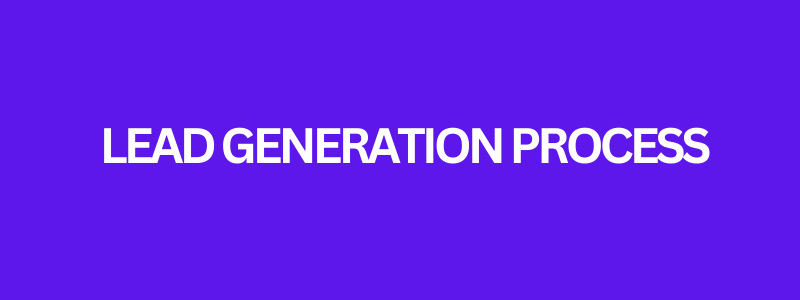In the ever-competitive world of business and marketing, the process of lead generation stands as a critical element in expanding one’s customer base and growing a brand. In this article, we will provide an in-depth exploration of the lead generation process, shedding light on the steps, strategies, and techniques that are essential for acquiring and nurturing valuable leads effectively.
Lead Generation Process

Lead generation is the methodical process of attracting and capturing potential customers’ interest in your products or services. The ultimate goal is to transform these potential customers, or leads, into paying customers. Following are the key steps of lead generation process:
Identifying the Target Audience:
The first step is to pinpoint your ideal customers. This involves defining your target audience’s characteristics, behaviors, and preferences.
Creating Valuable Content:
Once you know who your audience is, the next step is to create content that resonates with them. Valuable content can be in the form of blog posts, eBooks, webinars, videos, or any other format that provides solutions or information your target audience seeks.
Offering Lead Magnets:
To capture leads, you offer incentives, or lead magnets, such as free eBooks, templates, or exclusive access to valuable resources. These lead magnets entice potential customers to provide their contact information.
Utilizing Landing Pages:
Dedicated landing pages are used to promote lead magnets and capture lead information. These pages are designed to provide a clear and compelling call-to-action (CTA) and gather essential contact details.
Engaging with Social Media:
Social media platforms are valuable channels for lead generation. By sharing your content and engaging with your audience, you can direct them to your landing pages.
Email Marketing:
Automated email campaigns are deployed to nurture leads. These campaigns deliver relevant content and information to leads over time, guiding them through the sales funnel.
Lead Scoring:
Lead scoring assigns values to leads based on their interactions and engagement levels. Higher scores indicate leads that are more likely to convert.
Follow-Up and Sales Engagement:
Sales teams or representatives engage with leads who have shown strong interest or signaled their readiness to make a purchase.
Conversion:
The final step in the lead generation process is when a lead converts into a paying customer. This marks the successful culmination of the process.
Strategies for Successful Lead Generation
Content Marketing:
Creating valuable and relevant content is at the core of effective lead generation. Content should address the needs and pain points of your target audience.
SEO and Website Optimization:
For attracting organic traffic and capturing leads, ensure that your website and content are optimized for search engines is crucial.
Social Media Engagement:
Actively engage with your audience on social media platforms, and use paid social advertising to expand your reach.
Email Marketing:
Implement email marketing campaigns to nurture and guide leads through the sales funnel.
Paid Advertising:
Paid advertising through Google Ads, social media ads, and other platforms can help you reach a broader audience.
Conclusion
The lead generation process is an essential element of modern marketing strategies. By understanding the steps and implementing effective strategies, businesses can capture and nurture valuable leads, ultimately leading to growth and success in the competitive digital landscape. Lead generation is not just about acquiring contacts; it’s about building meaningful relationships and guiding potential customers toward becoming loyal patrons of your brand.